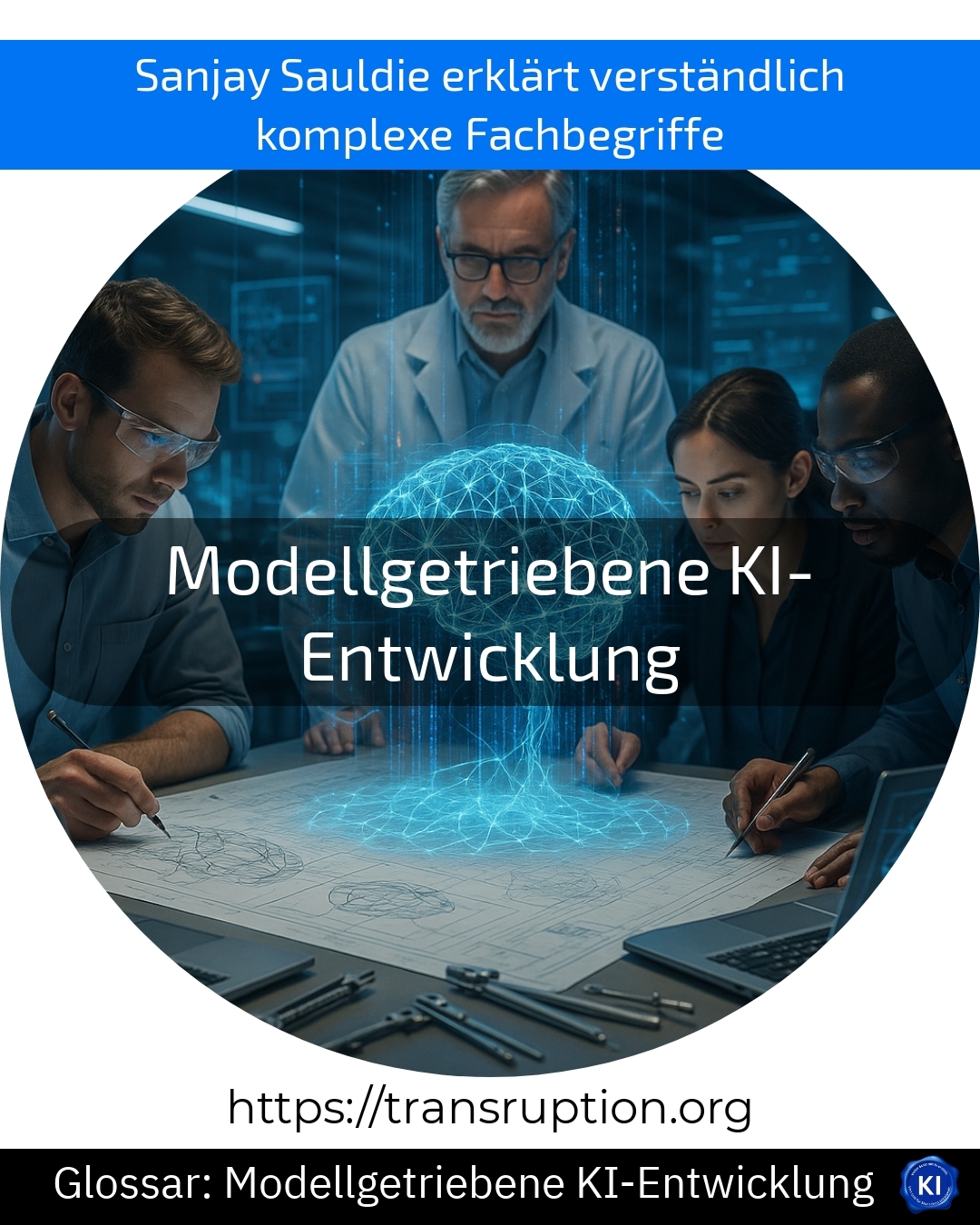Model-driven AI development is an important term in the fields of artificial intelligence, big data, smart data and digital transformation. Here, artificial intelligence (AI) and its solutions are not simply "tried out" or only trained on the basis of large amounts of data, but a well thought-out model is developed first. This model describes how the AI should work later on.
In contrast to traditional methods, where AI often learns according to the "trial and error" principle, model-driven AI development uses pre-defined structures to analyse and solve problems. For example, it is possible to determine exactly which data is important, what the processes look like and which rules the AI must follow. This reduces risks and improves the predictability of results.
An illustrative example: In a factory, an AI is supposed to recognise defects in products. With the help of model-driven AI development, a model is first created that defines exactly what defects look like and how they can be recognised. The AI is then trained using real product images. This ensures that the AI works faster, more reliably and more accurately.















